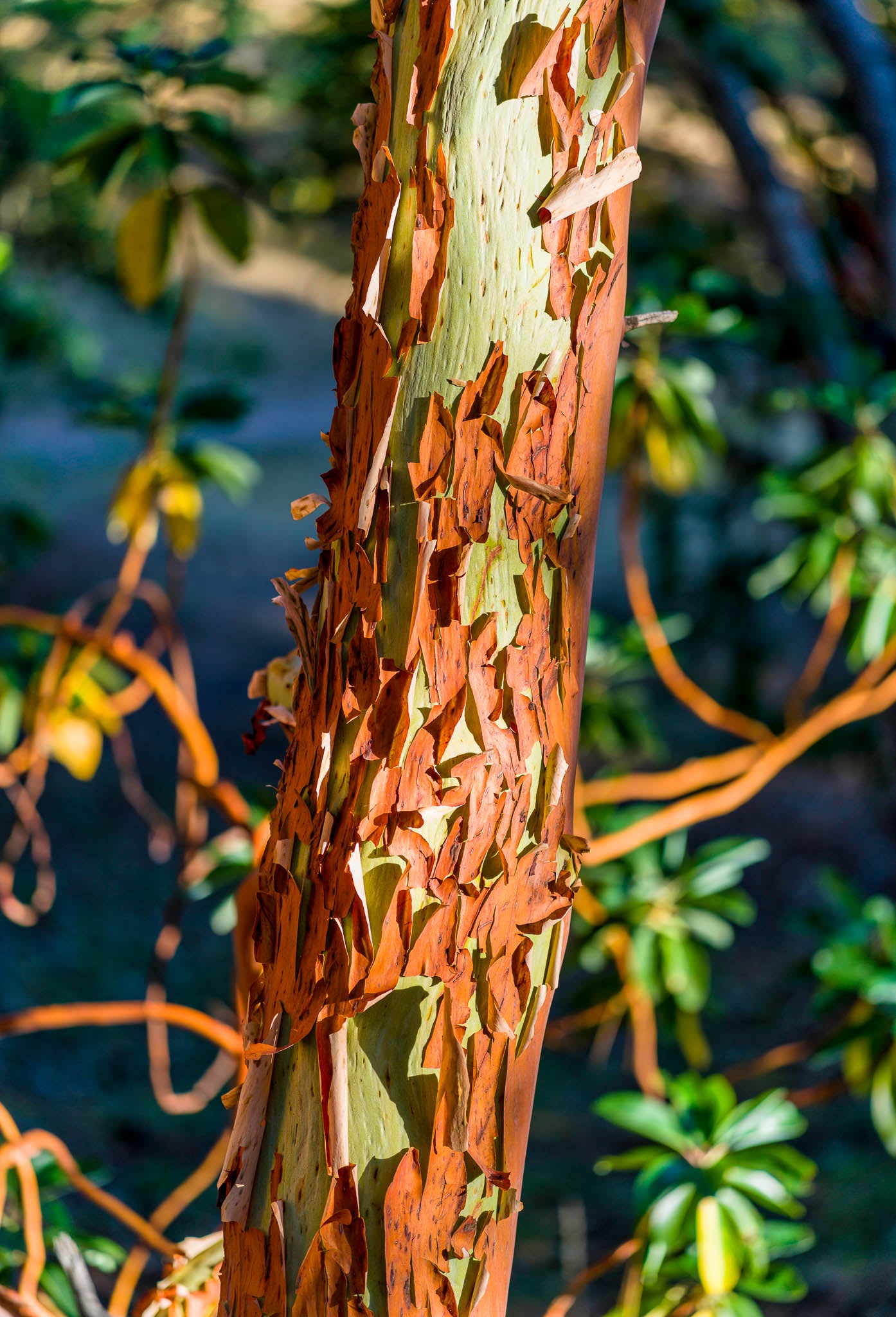

madrone bark
A revered native tree here on the West Coast, our Madrone or Madrona (Arbutus menziesii) has a beautiful paper-thin maroon bark that local Pacific Northwest tribes have used as a medicinal beverage since time immemorial. The bark curls or coils during the heat of the summer sheds from the tree. These coils are what is used to make a woodsy, and earthy tea which some believe has a calming effect. The flavor of the tea is lovely combination of clove, cinnamon, and mushroom.

madrone ecology
In our region of the southern Oregon coast range, madrones are less ubiquitous, often easy to spot growing out of a sloped ridge or coastal hill. A resilient, slow-growing tree, they like growing in ample sunshine on slopes and coastal or rocky bluffs with poor soil and good drainage. As you move east to the drier oak savanah ecosystems, they become more commonly dispersed. At Wild Coast Brew, we pair up with friends, family, and landowners to harvest madrone bark just as the trees shed their outer skin during the hot summer months. We wait until the moment they freshly fall to the ground, as opposed to pulling from the trunk of the tree.
Why do they shed their skin? The most commonly accepted theory is that shedding is an evolutionary defense mechanism that rids the tree of detrimental fungi, moss, lichens, or parasitic boring insects that tend to lay their eggs on the bark. Through a yearly exfoliation, madrone trees decrease their chances of infection or disease. Interestingly though, Madrone trees, like most plants and trees, have a strong symbiotic relationship with soil fungi that help them gather nutrients in poor soil, increase water storage, and ward off potential disease or infection.
Madrone bark is the main ingredient in our foraged forest chai tea called the Stoic, which also features turkey tail mushroom, conifer tips, cinnamon, and cardamom.
